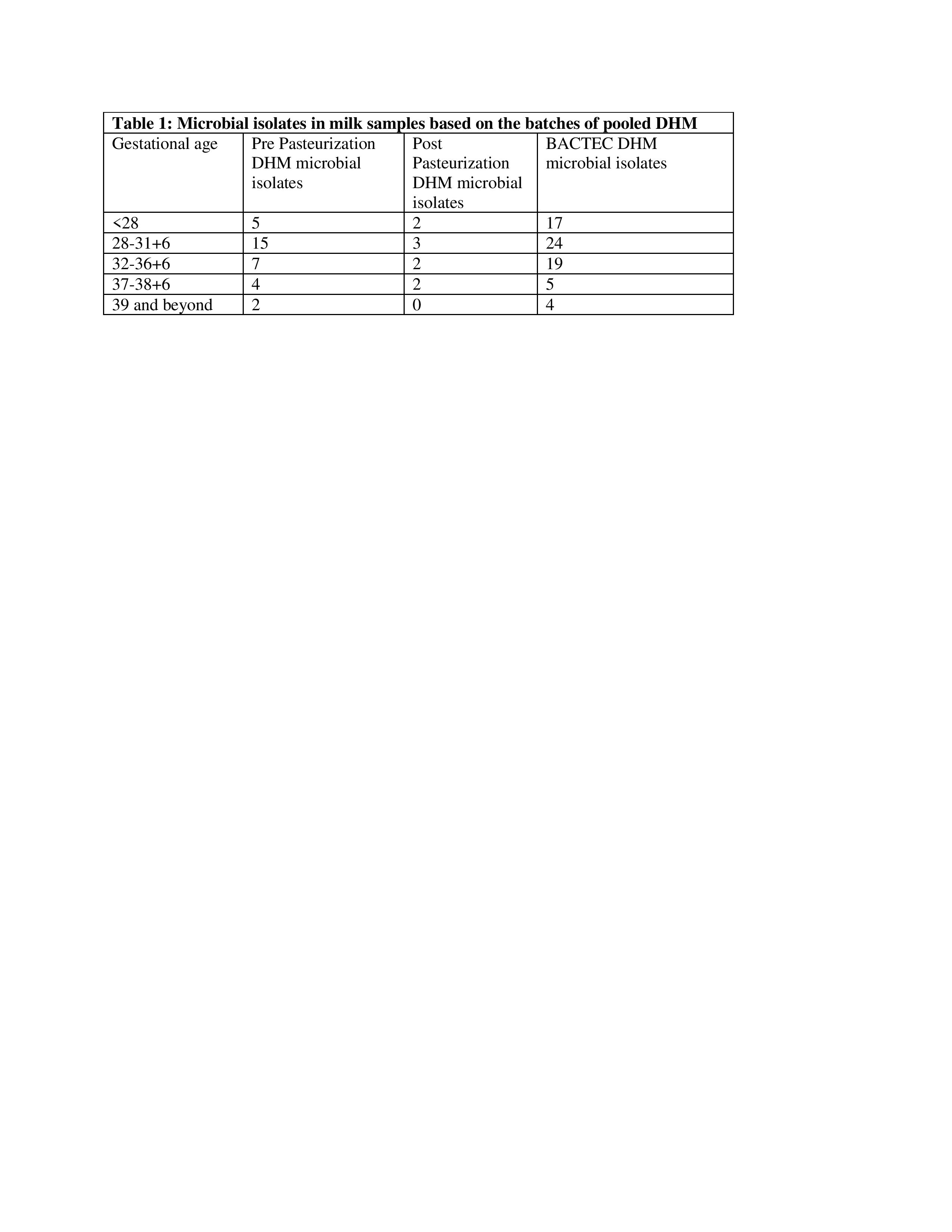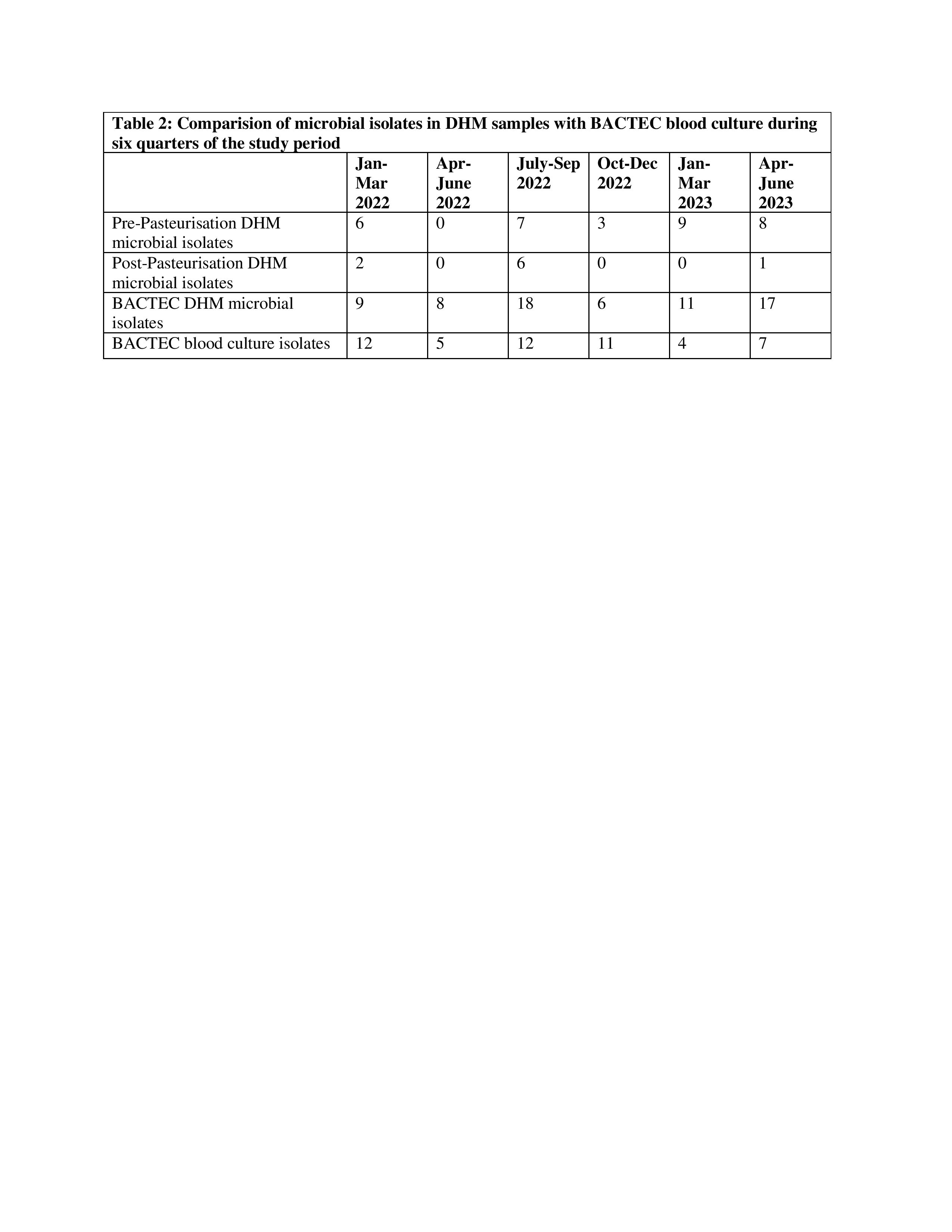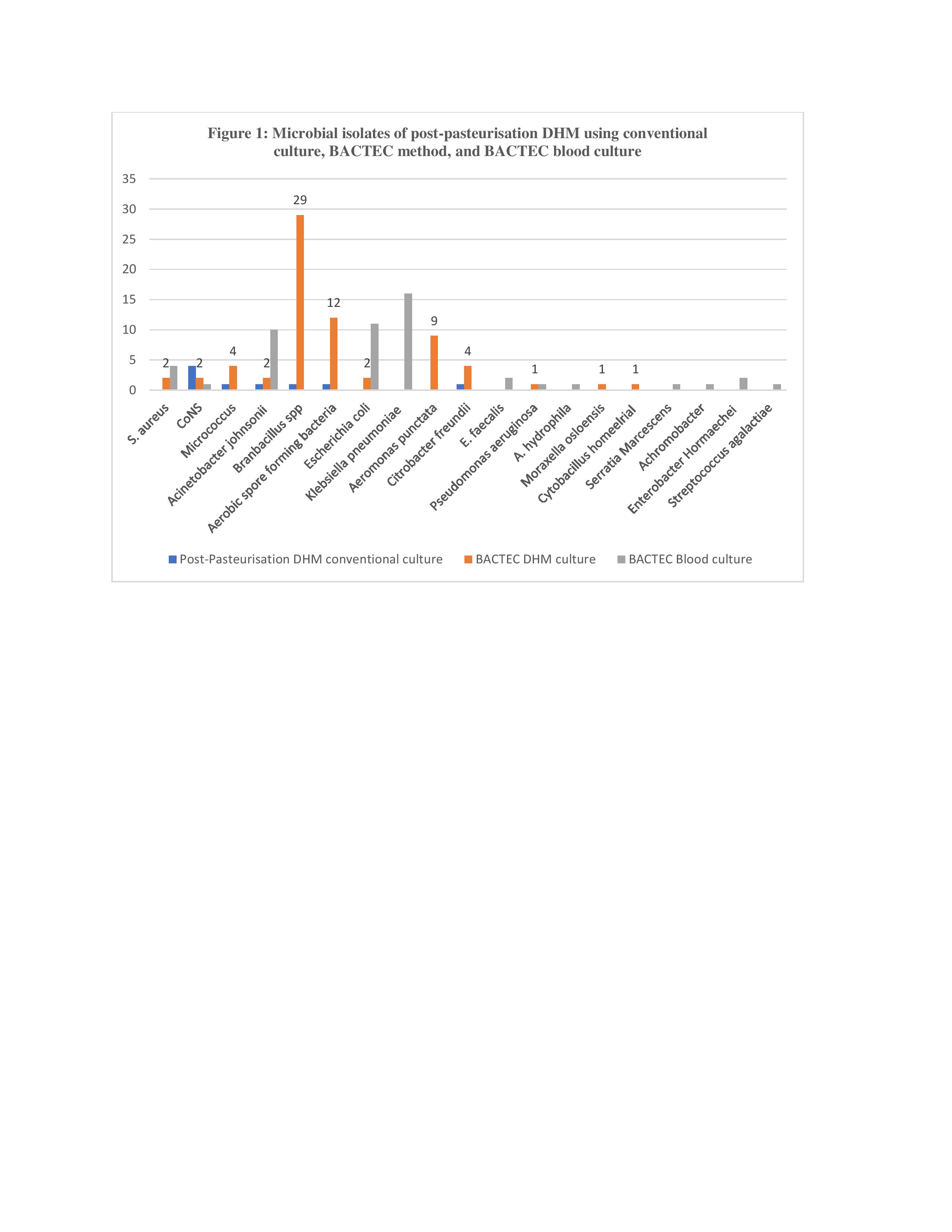Breastfeeding/Human Milk
Session: Breastfeeding/Human Milk 2: Human Milk Feeding
489 - Role of automated blood culture (BACTEC) in post pasteurization bacteriological screening of donated human milk: A Prospective Observational Study
Sunday, May 5, 2024
3:30 PM - 6:00 PM ET
Poster Number: 489
Publication Number: 489.2107
Publication Number: 489.2107
- SN
Sushma Nangia, MBBS, MD, DM
Professor
Lady Hardinge Medical College & Kalawati Saran Children's Hospital
New Delhi, Delhi, India
Presenting Author(s)
Background: Conventional methods of blood culture are now being replaced by automated culture systems, owing to reduced turnaround time, higher isolation rates, and isolation of fastidious microorganisms. Microbiological quality is one of the key safety standards in human milk bank operations. Early and accurate diagnosis of microbial contamination helps to ensure microbiological safety of the donated human milk (DHM).
Objective: To describe the profile of bacteria in post pasteurization pooled DHM samples using automated blood culture system (BACTEC) and to compare it against pre and post pasteurization milk samples using conventional culture and also to check association with clinical outcomes of neonates receiving donated milk.
Design/Methods: Prospective observational study from Jan 2022 till June 2023. Donor mothers after eligibility check, screening, and counselling donated breast milk. The donor milk was pooled and aliquoted into batches. Pre and post pasteurization DHM samples were sent to microbiology laboratory using conventional culture method and post pasteurization samples were also sent for culture using BACTEC method. The post pasteurization DHM samples which did not grow pathogenic microorganisms in conventional culture were dispensed to the neonates < 32 weeks of gestational age as per the unit policy.
Results: During the study period, 1080 liters of milk was donated which were pooled into 358 batches. Out of the total batches, 81, 91, 81, 56, and 49 batches were prepared by pooling DHM from mothers with babies born at < 28 weeks, 28-31+6, 32-36+6, 37-38+6, and 39 weeks or beyond, respectively. Microbiological analysis of the DHM samples sent from all the batches pre and post pasteurization using conventional culture and post pasteurization for BACTEC cultures grew 33, 9, and 69 organisms, respectively. During the study period, 51 babies ( < 32 weeks’ gestation) developed culture positive sepsis with majority having early onset sepsis (75%). There was no association between the patterns of microbial growth in the post pasteurization milk samples (using BACTEC or conventional method), and BACTEC blood cultures of the babies who developed sepsis after birth. The higher yield using BACTEC method was not associated with culture proven sepsis.
Conclusion(s): Routine post pasteurization BACTEC cultures of the DHM samples are not useful to determine the microbiological safety and should be discouraged. The microbiological quality of the post pasteurization milk samples should be assessed using conventional culture as has been recommended by national human milk bank guidelines.



